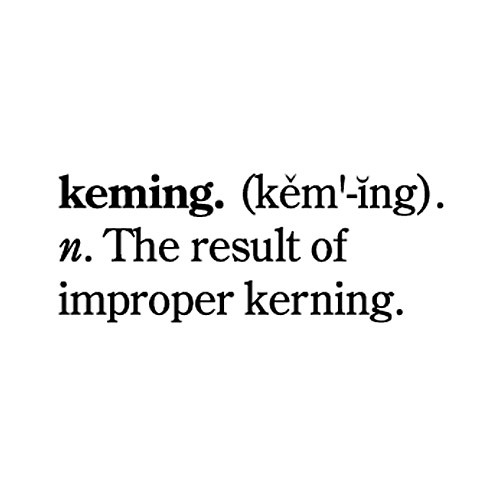Typography links for type nerds. Collated by Paul Randall.
Don't wanna be here? Send us removal request.
Link
Called the “snail” by Italians and the “monkey tail” by the Dutch, @ is the sine qua non of electronic communication, thanks to e-mail addresses and Twitter handles. @ has even been inducted into the permanent collection of the Museum of Modern Art, which cited its modern use as an example of “elegance, economy, intellectual transparency, and a sense of the possible future directions that are embedded in the arts of our time.
The history of how a symbol has been repurposed since it's first documented use in 1536.
0 notes
Link
"Type design had been seen as a brave but arcane business that requires a lifetime’s dedication. I’m happy that notion has gone"
An old interview I read on the Eye Magazine website.
1 note
·
View note
Video
vimeo
Video - The beauty of engraving. Following the process of engraving to letterpress print
9 notes
·
View notes
Link
Something to print and keep for reference. Either combination of typefaces has a number attached. The number corresponds to how suitable a pair they are.
Combine at will
Not a conservative choice
Think again
4 notes
·
View notes
Link
I often come across the problem of widows and orphans when using fully fluid grids, so here are 2 techniques I use to avoid them as much as possible.
1 note
·
View note
Link
Uncovering the typographic artifacts of New York City
1 note
·
View note
Link
Hop on the nostalgia train for a second. Think back to the 90s. To Nirvana, Linklater’s Slacker, and the flannel-clad rebels on the run from the 80s. To skateboards and graffiti and toe rings and VHS tapes. Things were messy then. And type design was messy, too. Words were splayed and chaotic, letters blurred. Textures were thick and heavy. Concert posters looked like someone had splattered paint on paper and then scratched out band names. You may have noticed it, you may not have, but at its peak, this typography style, called grunge, was ubiquitous. Alternative music cds, videogames, and zines—all the aggregate products of a wayward generation—appropriated its unfinished and frenzied aesthetic, and it became the largest, most cohesive movement in recent font design history.
It was everywhere—and then it wasn't.
Whether you hated it, or loved grunge typography it had a big effect on 90's graphic design. This post is a look back at the period with some examples on the effect it had on mainstream design as well as magazines like Ray Gun.
1 note
·
View note
Link
London has a rich source of publicly available type and lettering. The aim of London Typographica is to document this typographic landscape, all in one place.
The website, and accompanying app collate the signage and plot them on a large dynamic map of London.
2 notes
·
View notes
Link
Video and audio of the talks at the Robothon 2012, the conference on type design and technology.
1 note
·
View note
Link
Based near Burford, Oxfordshire, Fergus Wessel is a letter cutter producing fine memorials that can be seen throughout the UK, including St Paul’s Cathedral. Naomi Chapple interviews him in his workshop on his love of lettering and, in particular, the relevance of good typography in his work.
Another fantastic post from I Love Typography and the interview is a wonderful insight into the craft of an engraver.
You can see more of his work on his website http://www.stoneletters.com/
0 notes
Link
Designer and Illustrator Sasha Prood creates typography, illustrations, patterns and graphics using pencil, pen and watercolor with the computer.
It is a welcome change from the rich, and sometimes stark typographic work we see to create very organic work with the use of watercolours and vibrant colours.
4 notes
·
View notes
Link
A tumblr account that posts one letter per day. Some nice ones in there.
0 notes
Link
Simply put, typesetting.tv is a web-based documentary video series that explores the relationship between designers, their work, and the cities in which they live.
Our first season—currently in production—is a journey through six countries in Central and Eastern Europe. We are observing and exploring the beautiful typography existing in these places, while meeting a mix of up-and-coming typographers, graphic design legends, and everything in between.
0 notes
Link
An eclectic mix of hand lettering, it is projects like these that I like to see. Projects that focus the mind on creating a large body of work, with a fun outcome.
Make sure to catch up on Lisa's work over the rest of the year.
1 note
·
View note
Link
The website describes itself as "Information architecture explained by its past" and features many in-depth articles about printers and typographers from the 15th to the 20th Century.
5 notes
·
View notes
